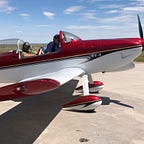The Lockheed Constellation — last of the great propeller airliners
Lockheed’s Super Constellation, officially designated the Model 1049, is aviation’s equivalent of the clipper ship. Like one of those magnificent vessels in full sail, the triple-finned ‘Super Connie’ was a beautiful, high-performing craft — unbelievably graceful in flight and adored by its crew. But like the Cutty Sark, the Constellation too was ultimately doomed to obsolescence by advances in technology.
The ‘Connie’ as it was generically known universally, would come to epitomize the word ‘airliner’. At a time when passenger aviation was still in its adolescence, the Connie flew, literally, all over the world. Pan American Airways flight ‘Pan Am 001’ was the first scheduled round-the world flight — operated by a Lockheed Model 049 Constellation, earliest fore-runner of the Model 749 and 1049 Super Constellations and derivatives thereof.
The unforgettable sight and sound of a Lockheed Constellation on takeoff — the shattering roar of four turbo-compound Wright Cyclone 18-cylinder radial engines, trailing flames at night which spectacularly illuminated the curved fuselage and lanky insect-like landing gear — were familiar, stirring sights at many airports around the world in the 1950s.
